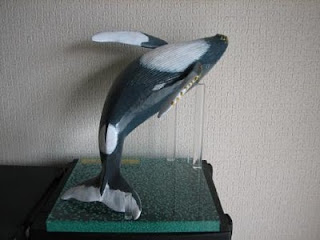
This is my thrity-six artwork of "Bottlenose Dolphin (Bandou Iruka).
Bottlenose dolphins live in group typically 15 members, called pods, but
group size varies from single individuals up to more than 1,000.
Dolphins often work as a team to harvest fish schools, but they also hunt
individually. Dolphins search for prey primarily using echolocation, which
is similar to sonar.




